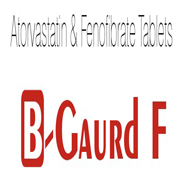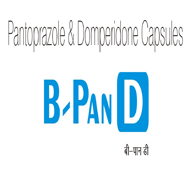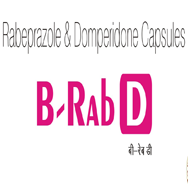Etodolac(ETO-B)

Etodolac belongs to a class of drugs called nonsteroidal anti-inflammatory drugs (NSAIDs). Other members of this class include ibuprofen (Motrin, Advil, Nuprin, etc.), naproxen (Aleve, Naprosyn), indomethacin (Indocin), nabumetone (Relafen) and numerous others. These drugs are used for the management of mild to moderate pain, fever, and inflammation. They work by reducing the levels of prostaglandins, which are chemicals that are responsible for pain and the fever and tenderness that occur with inflammation. Etodolac blocks the enzyme that makes prostaglandins (cyclooxygenase), resulting in lower concentrations of prostaglandins. As a consequence, inflammation, pain and fever are reduced. The FDA approved etodolac in January 1991.
It is an inhibitor of cyclooxygenase.
Preparations
Etodolac is manufactured by Shire under the trade name Lodine SR and by Meda Pharmaceuticals under the name Eccoxolac. Non-propriety etodolac is also available
Indications
Etodolac is licensed for the treatment of inflammation and pain caused by osteoarthritis and rheumatoid arthritis. It is increasingly being found in large seizures of heroin as an adulterant.
Dosing
Capsules: 200 and 300 mg; Tablets: 400 and 500 mg; Extended Release: 400, 500 and 600 mg .
Interactions
Etodolac should be avoided by patients with a history of asthma attacks, hives, or other allergic reactions to aspirin or other NSAIDs. Rare but severe allergic reactions have been reported in such individuals. It also should be avoided by patients with peptic ulcer disease or poor kidney function, since this medication can irritate both conditions. Etodolac is generally used with caution in patients taking blood thinning medications (anticoagulants), such as warfarin (Coumadin), because of increased risk of bleeding. Patients taking lithium can develop toxic blood lithium levels. Additionally, Etodolac has been found to interact with certain anti-depressant medications, such as sertraline or fluoxetine, can increase risks of stroke, heart attack, and other cardiovascular conditions. Patients also taking ciclosporin (Sandimmune) can develop kidney toxicity. Use in children has not been adequately studied. Etodolac is not habit-forming. NSAIDs should be discontinued prior to elective surgery because of a mild interference with clotting that is characteristic of this group of medicines. Etodolac is best discontinued at least four days in advance of the procedure.
Persons who have more than 3 alcoholic beverages per day are at increased risk of developing stomach ulcers when taking etodolac or other NSAIDs.
Pregnancy and Nursing
Etodolac is generally avoided during pregnancy and nursing.
Side Effects
Etodolac may cause side effects, or adverse drug reactions. Tell your doctor if any of these symptoms are severe or do not go away:
Constipation, diarrhea, gas or bloating, vomiting, headache, dizziness, ringing in the ears, runny nose, sore throat, blurred vision.
Some side effects can be serious. If you experience any of the following symptoms, or those mentioned in the IMPORTANT WARNING section, call your doctor immediately. Do not take any more etodolac until you speak to your doctor:
Unexplained weight gain, swelling of the eyes, face, lips, tongue, throat, hands, feet, ankles, or lower legs, fever or chills, blisters, rash, itching, hives, hoarseness, difficulty breathing or swallowing, yellowing of the skin or eyes, excessive tiredness, unusual bleeding or bruising, lack of energy, loss of appetite, pain in the upper right part of the stomach, flu-like symptoms, pale skin, fast heartbeat, cloudy, discolored, or bloody urine, difficult or painful urination, back pain.
Tolperisone(TOLL-B)

Clinical use
Typically, Tolperisone is indicated in the treatment of acute muscle spasms in back pain and spasticity in neurological diseases.
Manufacturer claims
Tolperisone is currently marketed in Europe as a centrally-acting muscle relaxant which reportedly has special advantages over other drugs of its class in that it is reported not to cause drowsiness or lethargy according to some manufacturers.
Besides claiming that "Tolperisone has an excellent efficacy & safety profile" these manufacturers also state that Tolperisone has the unique property of mediating muscle relaxation without concomitant sedation nor does it cause impairment of coordination, weakness, mental confusion or withdrawal phenomena in contrast to other muscle relaxants.
Indications
Tolperisone is reportedly used in the typical treatment of the following conditions:
- Pathologically increased tone of the cross-striated muscle caused by neurological diseases(damage of the pyramidal tract, multiocular sclerosis, myelopathy, encephalomyelitis)
- Spastic paralysis and other encephalopathies manifested with muscular dystonia
- Muscular hypertonicity and muscular contraction caused by the following:
- Spondylosis
- Spondylarthrosis
- Cervical and lumbar syndromes
- Arthrosis of the large joints
- Obliterating atherosclerosis of the extremity vessels
- Diabetical angiopathy
- Thromboangiitis obliterans
- Raynaud's syndrome
Contraindications and cautions
Manufacturers report that Tolperisone should not be used in the following conditions:
- Myasthenia
- Children under 1 years of age
- Pregnancy
- Breastfeeding
Side effects and adverse reactions
Some people using Tolperisone have reported the following reactions:
- In hypersensitivity: muscle weakness, headache, arterial hypotension, nausea, vomiting, dyspepsia.
- Skin allergic reactions: skin rash, hives, Quincke's edema, anaphylactic shock.
The side effects and reactions listed above may not include all effects reported by the drug's manufacturer.
Interactions
It is believed that Tolperisone has few interactions with other medicines. However, this doesn't rule out any interactions that may or may not have been reported to care-givers thus far.
Some manufacturers have stated that Tolperisone may enhance the effects of other neuromuscular blocking agents.
Dosage
According to various sources, the typical oral adult dose for Tolperisone is 150mg to 450mg in a 24-hour period divided into two or three doses. It is highly advised that dosage information be confirmed by information provided from the manufacturer and prescriber.
More detailed dosage information is as follows:
Adults over 12 years old:
- Oral:50mg to 150mg every 8 hours
- IM: 100mg every 12 hours.
- IV: 100mg over 24 hours.
Pediatric Dosage (minimum weight of 20 Kg. minimum age 6 years old):
- Oral dosage: 1.000 mg/kg every 8 hours.
Neonatal Dosage (minimum weight of 3 Kg.)
- 2.500 mg/kg every 8 hours.
Thiocolchicoside(THYO-B)

Thiocolchicoside is a muscle relaxant. (Thiocolchicoside), a muscle relaxant agent with anti-inflammatory and analgesic actions, also is used topically for the treatment of muscular spasms and for rheumatologic, orthopedic, and traumatologic disorders.
It is sold as Neoflax or MuscoRil in some countries outside USA.Description
Thiocolchicoside, a semi-synthetic derivative of the naturally occurring compound colchicoside with a relaxant effect on skeletal muscle, has been found to displace both [3H]gamma-aminobutyric acid ([3H]GABA) and [3H]strychnine binding, suggesting an interaction with both GABA and strychnine-sensitive glycine receptors. In order to gain further insight into the interaction of thiocolchicoside with these receptors, the binding of [3H]thiocolchicoside in rat spinal cord-brainstem and cortical synaptic membranes was characterized. [3H]Thiocolchicoside binding was saturable in both tissues examined. In spinal cord-brainstem membranes, we found a K(D) of 254 +/- 47 nM and a Bmax of 2.39 +/- 0.36 pmol/mg protein, whereas in cortical membranes, a K(D) of 176 nM and a Bmax of 4.20 pmol/mg protein was observed. A similar K(D) value was found in kinetic experiments performed in spinal cord-brainstem membranes. Heterologous displacement experiments showed that GABA and strychnine displaced the binding in a dose-dependent manner, whereas glycine was ineffective. [3H]Thiocolchicoside binding was also displaced by several GABA(A) receptor agonists and antagonists, but not by baclofen, flunitrazepam, guvacine, picrotoxin or by other drugs unrelated to GABA transmission. In spinal cord-brainstem, and to a lower extent, in cortical membranes, GABA and its analogs were not able to completely displace [3H]thiocolchicoside specific binding indicating that, besides GABA(A) receptors, thiocolchicoside can bind to another unidentified site. Unlabelled thiocolchicoside, however, completely displaced [3H]muscimol binding both in cortical and in spinal cord-brainstem synaptic membranes with an IC50 in the low microM range. Neurosteroids were found to modulate the binding in cortical but not in spinal cord-brainstem synaptic membranes. We conclude that [3H]thiocolchicoside binding shows a pharmacological profile indicating an interaction with the GABA(A) receptor. The different affinities for the GABA(A) receptor agonists and antagonists and sensitivity to neurosteroids obtained in the cerebral cortex and in the spinal cord may indicate a preferential interaction of the compound with a subtype of the GABA(A) receptor. The data also indicate that [3H]thiocolchicoside binds to another site(s), whose nature remains to be elucidated.I
Mechanisms of action
Central action: blocking of the synapses of the medullary interneurones and under cortical.No the effect on the junction myoneuronale nor on muscle fibre.Inhibit the reflexes polysynaptic, without touching with the arc reflexe elementary monosynaptic.Decrease the influence of the réticulée formation downward facilitatrice on the gamma activity, from where reduction in muscular hypertonicity.Would be a agonist Gabaergique:- Therapie 1981;36:95-102.
Required effects
MYORELAXANT ( principal )
Therapeutic indications
CRAMP ( principal ) traumatic, inflammatory or neurogenes. LUMBAGO( principal ) Form invalidating:- Press Med 1990;19:1133-1136. REEDUCATION FONCTIONNELLE(ADJUVANT) ( secondary )
Side effects
Somnolence (Certain,rare) Nausea (Some,very rare) Vomiting (Some, very rare) Pain Epigastrique (Some,very rare) Diarrhoea (Some,very rare) Anxiety (Some,very rare) Insomnia (Some, very rare) Obnubilation (Certain,rare)
Fenofibrate(B-Gaurd F)

Fenofibrate is a drug of the fibrate class. Fenofibrate was discovered by Groupe Fournier SA, before it was acquired in 2005 by Solvay Pharmaceutical, a business unit owned by the Belgian corporation, Solvay S.A. It is mainly used to reduce cholesterol levels in patients at risk of cardiovascular disease. Like other fibrates, it reduces both low-density lipoprotein (LDL) and very low density lipoprotein (VLDL) levels, as well as increasing high-density lipoprotein (HDL) levels and reducing tryglycerides level. It also appears to have a beneficial effect on the insulin resistance featured by the metabolic syndrome.[1] It is used alone or in conjunction with statins in the treatment of hypercholesterolemia and hypertriglyceridemia. Fenofibrate is sold under the brand name Tricor and Trilipix by Abbott Labs, Lipofen by Kowa Pharmaceuticals America Inc, Lofibra by Teva, Lipanthyl and Lipidil by Solvay Pharmaceutical, Fenocor-67 by Ordain Health Care Pvt Ltd and Fenogal by SMB Laboratories.
Dosage
The pharmaceutical form and the strength may change from one country to another, and from one brand to another. In the United States, Tricor was reformulated in 2005 and is available in tablets of 48 and 145 mg. This reformulation is controversial and is the subject of antitrust litigation by generic drug manufacturer Teva.[2] Also available in the United States, Lofibra is available in 54 and 160 mg tablets, as well as 67, 134, and 200 mg micronized capsules[3]. Generic equivalents of Lofibra capsules are currently available in all three strengths in the United States. In Europe, it is available in either coated tablet or capsule; the strength range includes 67, 145, 160 and 200 mg. The differences among strengths are a result of altered bioavailability (the fraction absorbed by the body) due to particle size. For example, 200 mg can be replaced by 160 mg micronized fenofibrate. The 145 mg strength is a new strength appeared in 2005-2006 which also replaces 200 or 160 mg as the fenofibrate is nanonised (ie the particle size is below 400 nm).
Fenofibrate increases the serum level of statins. Therefore, a lower dose of statin is generally necessary. Dose of fenofibrate must also be lowered in moderate to severe renal failure and most experts recommend that fenofibrate be given in the morning and the statin at night.
Indication
Fenofibrate is indicated for hypercholesterolaemia and hypertriglyceridaemia alone or combined (types IIa, IIb, III, IV and V dyslipidaemias).
Recent updates
The Fenofibrate Intervention and Event Lowering in Diabetes (FIELD) study, which is the largest fibrate trial involving 9795 patients with type 2 diabetes mellitus published in 2005 did not show significantly lowering the risk for primary end point (non-fatal MI and CHD death). But, it does show a relative risk reduction of 11% for Non-Fatal MI & CHD Death, although statistically insignificant. While, the secondary end-point (total CVD events) is statistically significant with a relative risk reduction of 11% for total CVD events. However, the FIELD study involve a large percentage of drop in statin use for the patients especially in the placebo group, which in turn might affect the study itself. After the adjustment was done, it shows that a relative risk reduction of 19% for Non-Fatal MI & CHD Death, and 15% a relative risk reduction in total CVD events.
In the FIELD study, it also shows the benefit of reducing the risk of microvascular complications in type 2 diabetes patients. Fenofibrate treatment led to reduction in the progression albuminuria (14% less progression and 15% more regression compared with placebo). In addition, there is a 30% reduction of the needs for laser treatment for retinopathy.
The FIELD sub-analysis study, shows that fenofibrate reduces the first laser treatment by 31%. In addition, for macular oedema by 31% and for proliferative retinopathy by 30%. In the ophtalmology sub-study, fenofibrate reduces the development or progression of retinopathy by reducing 22% in all patients and 79% in patients with pre-existing retinopathy.
The FIELD study also showed that fenofibrate reduced the number of non-traumatic amputations by 38%.Like most fibrates, fenofibrate can cause stomach upsets and myopathy (muscle pain) and very rarely rhabdomyolysis. This risk is increased when used together with statins. However, the Fenofibrate Intervention and Event Lowering in Diabetes (FIELD) study provides important information that long-term treatment with fenofibrate therapy appears to have a favorable safety profile in patients with type 2 diabetes, even when nonstudy lipid-lowering medications were added. In FIELD, there were no cases of rhabdomyolysis reported in patients on combination therapy with fenofibrate and a statin. Thus, there is an increasing body of evidence that fenofibrate/statin combination therapy is safe and effective at managing dyslipidemia in patients with type 2 diabetes who are at risk for cardiovascular events.
The recent FIELD Sub-analysis study published in Diabetes Care 2009, showed that fenofibrate significantly reduced CVD events in those with low HDL Cholesterol and hypertension. The largest effect of fenofibrate to reduce CVD risk was observed in subjects with marked dyslipidemia (TG>2.3mmol/L & low HDL-C) in whom a 27% relative reduction risk of total CVD event was observed. Therefore, the absolute benefits of fenofibrate are likely to be greater when metabolic syndrome feature are present. The highest risk and greatest benefits of fenofibrate are seen among those with marked hypertriglyceridemia.
Other uses
Fenofibrate has a uricosuric effect, making it of use in the management of gout.
Ramipril(Ramistate)

Ramipril (marketed as Ramipro by Westfield Pharma in the Philippines, marketed by Sanofi-Aventis as Tritace and by King Pharmaceuticals as Altace in the United States) is an angiotensin-converting enzyme (ACE) inhibitor, used to treat hypertension and congestive heart failure. ACE inhibitors lower the production of angiotensin II, therefore relaxing arterial muscles while at the same time enlarging the arteries, allowing the heart to pump blood more easily, and increasing blood flow due to more blood being pumped into and through larger passageways.
Ramipril is a prodrug and is converted to the active metabolite ramiprilat by liver esterase enzymes.[1] Ramiprilat is mostly excreted by the kidneys. The half-life of ramiprilat is variable (3-16 hours), and is prolonged by heart and liver failure, as well as kidney failure.
It is marketed by King Pharmaceuticals under the brand name Altace. The compound was protected by the U.S. Patent 5,061,722 (was scheduled to expire on 29th Oct, 2008) assigned to Aventis. On September 11, 2007 in an appeal by Lupin Pharmaceuticals the United States Court of Appeals for the Federal Circuit reversed a district court trial verdict, finding that Aventis's patent on Altace was invalid for obviousness - opening the gate of this medicine to generic manufacturers. Ramipril is marketed in India under the brand names of Cardace, Zigpril and Zorem.
Indications
Indications for its use include:
- Hypertension;
- Congestive heart failure;
- Following myocardial infarction in patients with clinical evidence of heart failure;
- Susceptible patients over 55 years: prevention of myocardial infarction, stroke, cardiovascular death or need of revascularization procedures.
- Diabetic nephropathy with microalbuminuria
Dose
Patients are started on the lowest dose and titrated up every 1 - 2 weeks as required.
Dosage comes in the following forms: 1.25 mg, 2.5 mg, 5 mg, 10 mg.
Flavoxate(Uricool)

Flavoxate is an anticholinergic with antimuscarinic effects. Its muscle relaxant properties may be due to a direct action on the smooth muscle rather than by antagonizing muscarinic receptors.
Clinical uses
Flavoxate is used to treat urinary bladder spasms. It is available under the trade name Urispas (Paladin),Uritac by El Saad company in Syria, or under the name Bladderon by Nippon Shinyaku of Japan.
Flavoxate HCl is indicated for symptomatic relief of interstitial cystitis, dysuria, urgency, nocturia, suprapubic pain, frequency and incontinence as may occur in cystitis, prostatitis, urethritis, urethrocystitis/urethrotrigonitis.
Adverse Reactions The following adverse reactions have been observed, but there are not enough data to support an estimate of their frequency. Nausea, vomiting, dry mouth vertigo, headache, mental confusion, especially in the elderly, drowsiness, nervousness. tachycardia and palpitation. urticaria and other dermatoses, eosinophilia and hyperpyrexia, increased ocular tension, blurred vision, disturbance in eye accommodation and dysuria.
Contraindications: Flavoxate HCl is contraindicated in patients who have any of the following obstructive conditions: pyloric or duodenal obstruction, obstructive intestinal lesions or ileus, achalasia, gastrointestinal hemorrhage and obstructive uropathies of the lower urinary tract.
















